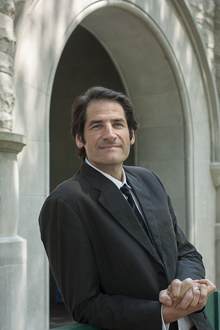History of reclusive J.D. Salinger told through personal lens

Thomas Beller, author of a new biography of J.D. Salinger, is a frequent contributor to The New Yorker"s Culture Desk, The New York Times and Travel and Leisure magazine. (Photo by Tim Mueller)
His book, J.D. Salinger: The Escape Artist (New Harvest, 2014), has gained literary attention.
The mystery surrounding Salinger, who withdrew from society shortly after publishing the classic novel Catcher in the Rye, has been examined by numerous literary writers.
This biography stands out with a new perspective on Salinger"s complicated relationship to his Jewish heritage during World War II, as well as a thorough examination of the early dwellings of the author.
“There is the fetishization of place in my book trying to place the author in the context of his world, its physical and cultural landscape,” says Beller.
“I focus on his family dynamic, and dwell on the relationships that were crucial to his literary development, with much time spent on the complicated dynamic of his relationship to The New Yorker.”
In a surprising turn, Beller discovered that The New Yorker editor of Salinger"s short stories, Gus Labrano, grew up right down the street from where Beller now resides in New Orleans. He makes the case that Labrano was Salinger"s most important editor at the magazine.
Beller"s personal, conversational narrative takes readers through his own journey exploring Salinger"s life, from visiting Salinger"s childhood summer camp in Maine, to the military academy where Salinger was sent after being kicked out of prep school, and through the landmarks of Manhattan, where both writers were raised.
“I found Salinger to be such an interesting prism into so many questions and topics I find interesting,” he says, “including the tensions between fiction and autobiography, and the way life implicates us in the biographical squint.”
Elisabeth Morgan is a freelance writer living in New Orleans. She graduated from Tulane University in 2011 with a BA in French and English.
